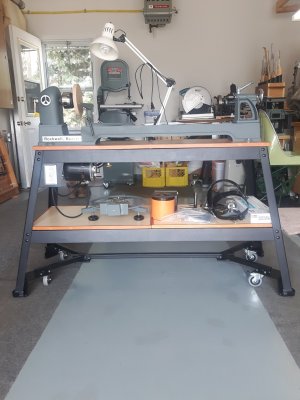@Razzputen I assume you are speaking to a Rockwell / Beaver wood lathe and stand like this one? Mine has the standard 120V on/off switch see upper left corner of the stand. Wood turning chisels in background upper right.
Yes I refurbished mine looks like new and runs and works perfectly. The mobile stand with locking casters keeps it dead steady. Got this idea for my mobile stand from 3 legged piano moving stands. Click on photo to enlarge. No drooling allowed. LOL
Far right a WW2 Airspeed Oxford pilots seat (side view) in the process of repair for the Vintage Aircraft Restorers group at our Western Development Museum.



